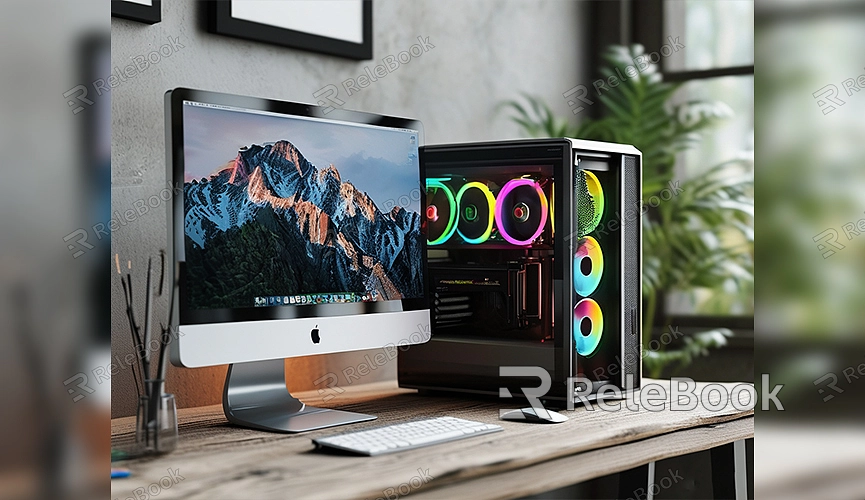How to Render Animation to MP4 Blender
Blender is a powerful 3D modeling and animation software used by many to create stunning 3D animations. Despite its robust capabilities, many users face a common challenge after finishing their animations: how to render the animation into MP4 format for easier sharing or playback. This guide will walk you through the steps to render an animation to MP4 format in Blender, helping you successfully complete this crucial step.
Setting Up the Render Engine
The first step in rendering animation in Blender is to choose the appropriate render engine. Blender currently offers three main render engines: Eevee, Cycles, and Workbench. Eevee is suited for real-time rendering, Cycles is ideal for high-quality ray tracing, and Workbench is used mainly for quick previews. For rendering animations, choose the render engine based on your needs. If you prioritize speed, opt for Eevee; for more realistic lighting effects, go with Cycles.

After opening Blender, select your desired render engine from the “Render Properties” panel on the right. This step is crucial for ensuring render quality, so choose according to your project requirements.
Setting Render Output Format
Next, you need to set the output format for rendering. By default, Blender outputs a sequence of still images. To export your animation as an MP4 file, you need to make a few adjustments.
1. Find the “Output Properties” panel on the right side of the Blender interface.
2. In the “File Format” section, select “FFmpeg Video.” This is essential because FFmpeg supports exporting the rendered image sequence directly as a video file.
3. Under the “Container” option, choose “MP4.” This setting ensures that your animation is exported in MP4 format.
4. In the “Encoder” section, it’s recommended to select “H.264,” the most commonly used encoding format, which provides good compatibility and compression.
Setting Resolution and Frame Rate
To ensure the quality and smoothness of your animation, you need to set the appropriate resolution and frame rate. These settings can be found in the same “Output Properties” panel.
- Resolution: Choose a resolution that suits your project needs. A common standard is 1080p (1920x1080), but you can adjust the resolution for higher quality or compatibility with different platforms.
- Frame Rate: The frame rate determines the smoothness of the animation. Common frame rates are 24 fps for a film-like effect and 30 fps for smoother video. Ensure these settings meet your project requirements, especially if the animation will be played on different devices.
Setting Animation Output Path
To avoid losing your rendered file, set the output path for the animation in advance. In the “Output Properties” panel, click the output path field and choose the folder where you want to save the animation. Ensure the path is correctly set so you can quickly locate the generated MP4 file after rendering.
Starting the Animation Render
Once all settings are configured, you can start rendering the animation. Click the “Render” option in the top menu and select “Render Animation.” Blender will render the animation frame by frame according to your settings and save it as an MP4 file.
Rendering time may vary depending on the complexity of the project, resolution, and frame rate. Higher computer specifications will result in faster rendering. Regardless, patience is key while waiting for the render to complete.
Tips for Improving Render Efficiency
Many users seek to speed up rendering times. Here are a few practical tips to help accelerate the process:
- Reduce Sampling Rates: In the Cycles render engine, higher sampling rates improve quality but slow down rendering. You can lower the sampling rates to speed up rendering.
- Use Low-Resolution Previews: Early in the animation process, preview with lower resolution to check results before performing high-resolution rendering.
- Enable GPU Rendering: If your computer has a powerful GPU, enabling GPU rendering can significantly boost rendering speed.
With this guide, you should now understand how to render animation to MP4 format in Blender. From selecting the right render engine to configuring output format, resolution, and frame rate, and finally rendering the output, this process requires patience and careful settings. However, seeing your rendered MP4 animation makes all the effort worthwhile.
If you need high-quality 3D textures and HDRIs for creating models and virtual scenes, you can download them for free from [Relebook](https://textures.relebook.com/). For exquisite 3D models, visit [Relebook](https://3dmodels.relebook.com/), which offers a wide range of premium 3D resources.
Blender’s animation rendering capabilities are powerful and flexible. By mastering the basic techniques, you can easily export your animation projects to MP4 format. With continued practice and optimization, you’ll become increasingly familiar with this process.

